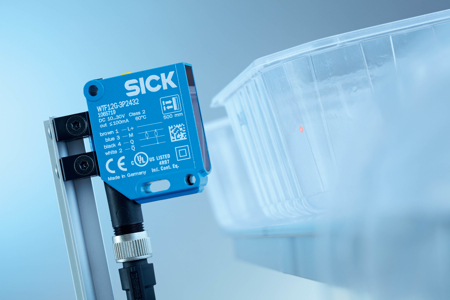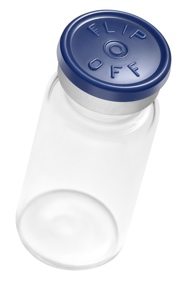As the market sees the introduction of more generics, biologics and personalised medicines, packaging suppliers are having to adapt to providing more niche and complex packaging concepts and filling equipment. In some respects this is driving growth. A recent report by Life Science Industry Research on pharmaceutical product containers (bottles, vials, blister packs, etc.), for example, forecasts that this global packaging market will grow at a CAGR of 6.7% from 2013 to 2018, to reach a value of US$78.79bn.1 The report predicts market growth will be driven by the growing generics market and increased drug delivery innovation. Emerging geographies in Asia-Pacific, such as India and China, are expected to register maximum growth, due to increasing generic and contract manufacturing activities.
As most of the recent advances have been in biological therapies, which need to be injected, the fastest growth is likely to come from pre-fillable syringes and parenteral vials. Other areas of growth are expected to come from labels and accessories, blister packs and temperature-controlled packaging for medicines.
The availability of raw materials, price volatility and changing health regulations, meanwhile, are major factors curbing the growth of this market. The report also says that recent mergers and acquisitions indicate that the industry is on its way to consolidation globally, with international packaging suppliers strengthening their presence in emerging markets.
Whereas a decade ago, packaging was often considered relatively late in the product development cycle, it has now become an integral part of the pharma product requiring early consideration and plays an important part in enabling manufacturers to differentiate their products from those of competitors. Packaging and labelling are performing a greater role in terms of protecting and promoting products, increasing patient compliance and in meeting strict new anti-counterfeiting measures introduced by regulators.
Equipment developments
In its packaging equipment report,2 Life Science Industry Research says that in response to rising demand for flexible, automated and integrated packaging lines, equipment manufacturers are applying novel technologies to cut downtime and to cater for smaller niche product runs. For example, last year contract services provider Almac expanded its UK packaging facility with a humidity-controlled blister packaging suite, complete with off line just-in-time blister printing. Meeting the requirements of two Japanese clients, the expansion included extensive suite modifications for processing humidity-sensitive drug products and involved installation of a new Noack 623 blister line, a custom-designed desiccant feeder and an off-line Hapa Blister-Jet printer.
David Downey, Almac’s VP of Commercial Operations said: ‘This co-investment allows Almac to address complex packaging challenges associated with innovative drug products that require enhanced environmental controls but, importantly, also provides our partners with the option to address modest country-specific market volumes, by off-line printing blank blisters through the Hapa unit. This solution will be of significant value to those companies launching orphan and niche blistered drug products into EU and ROW (rest of the world) markets, many of which Almac already supports.’

Pharmaceutical manufacturers would like to use clear packaging and films more often, but transparent and reflective materials can pose difficulties for production line engineers tasked with detecting packaging reliably with optical sensors. The TranspaTect photoelectric distance sensor, developed by SICK, achieves advanced clear material detection without the need for a reflector. Its high optical performance and detection accuracy promise better production efficiency, cost savings, and quick and easy commissioning on processes such as picking, placing, labelling and printing. A key development is that operators no longer have the tricky task of mounting the reflector and aligning it with the sensor. Instead, the metallic surface of a convenient machine component is used as a reference surface. This innovation also opens up extra design freedom for packaging machine builders
Regulations such as the EU Falsified Medicines Directive (FMD) and US Drug Supply Chain Act (DSCA) are also driving growth. Market research firm TechNavio goes as far as predicting that the global anticounterfeit packaging market will grow at a CAGR of 16.23% from 2015–2019. The need to print 2D codes and other unique serial identifiers has led to significant development in new printing equipment.
Videojet Technologies, for example, has introduced the 7810 UV 2-Watt Laser, which provides permanent, high-resolution marking on HDPE, LDPE and synthetic fibre materials. This system is suitable for pharmaceutical and medical device manufacturers as the surface of the product remains undamaged and the code is resistant to abrasives, chemicals and sterilisation processes.
Specifically engineered to allow on-the-fly marking at speeds up to 250ppm, the 7810 UV laser’s proprietary 360° Arc Software compensates for products on curved lines of movement to help ensure consistent, high-quality coding, irrespective of product orientation. The 7810 UV is also suitable for sealing blister packs.
Smart packaging has also become an active field of research as the need to track goods through the supply chain grows. Global Factories, a provider of medicine pouch verification, is using Thinfilm printed memory labels for security and authentication in its new Vandenbrink Blister Packaging Machine (VBM). Thinfilm Memory, produced by Thin Film Electronics of Oslo, Norway, provides printed, rewritable memory labels that cannot be copied.

West Pharmaceutical Services will show the Flip-Off PlusRU seal and other new solutions for injectable drug administration at Pharmapack Europe 2015 in Paris, France
Previously deployed for product protection of luxury goods, Global Factories will now extend the use of Thinfilm memory to pharma security applications. Its VBM blister packer will be launched during the first quarter of 2015 and blister cards featuring Thinfilm memory label systems will be introduced to key global markets throughout 2015.
Innovative solutions for injectable drug administration, are of growing importance and West Pharmaceutical Services will show its latest innovations, designed to enhance the quality, safety and efficacy of drug products for pharma and biotech manufacturers, such as the Flip-Off PlusRU seal, at Pharmapack Europe 2015. ‘As the healthcare industry continues to transform and new drug compounds and pharmaceutical innovations emerge, integrated drug delivery technology becomes more important to think about. Selecting the correct container closure system is paramount,’ says Dr Mike Schäfers, VP, Global Marketing, Pharmaceutical Packaging Systems, West.
References
1. Pharmaceutical Packaging Market by Packaging Type, Raw Material, and Drug Delivery Type – Global Trends & Forecast to 2018 from www.lifescienceindustryresearch.com
2. Pharmaceutical Packaging Equipment Market by Package Type and Product Type – Global Forecast to 2018 from www.lifescienceindustryresearch.com




